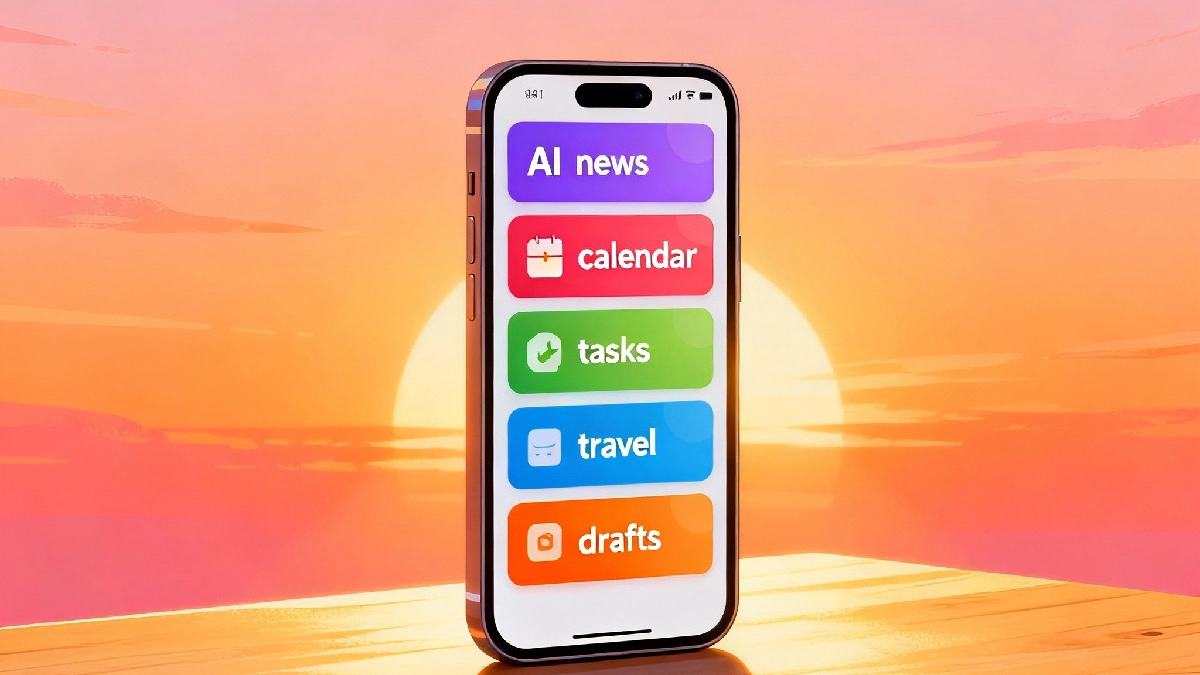OpenAI’s ChatGPT Pulse reframes the morning routine by assembling a set of concise, visual briefing cards overnight and presenting a prioritized slate at wake-up, shifting assistants from reactive Q&A to proactive, asynchronous support. The result is a programmable morning where attention is allocated across news, meetings, and personal commitments through a finite, high-signal interface rather than an infinite feed.
What Pulse does
Pulse generates a handful of personalized cards—typically five to ten—that summarize timely items like news, meeting prep, travel nudges, and action prompts, each designed for quick triage with options to expand or convert into tasks and drafts. These cards appear once daily and operate as springboards into deeper conversations, positioning the assistant as an initiator of the day’s agenda rather than a passive responder.
Pulse personalization draws from recent conversations, long-term interests, explicit thumbs-up/down feedback, and opt-in integrations such as email and calendar. Integrations are off by default and must be enabled, emphasizing control and selective context-sharing to keep the morning slate focused and relevant.
Where it lives in the stack
Pulse debuts on mobile for Pro-tier subscribers, reflecting the compute intensity of overnight synthesis and the common pattern of staging agentic features behind premium plans before broader rollout. It aligns with a shift toward assistant behaviors that run asynchronously—researching, drafting, and curating outside the chat loop—to deliver outcomes at defined moments like the morning brief.
This positioning shows how product experience is tethered to infrastructure capacity and efficiency: proactive, multi-source synthesis at scale requires careful gating, and expanded availability typically follows optimization and data center growth.
The attention shift
Pulse exchanges endless scrolling for a finite, scannable set of cards, effectively creating a daily front page tailored to personal and public context. This can redirect the first minutes of the day away from newsletters, news apps, and social feeds toward an AI-curated gateway that brokers attention upstream of publishers.
For users, finite cards reduce decision fatigue and concentrate energy on likely priorities, while ongoing feedback sharpens future briefs. Over time, this compounding personalization can deepen reliance on the assistant as the first-open destination and coordinator of the day’s tasks and information.
Data, control, and trust
Because Pulse makes inferences without explicit prompts, trust hinges on visible controls, limited scope, and meaningful feedback loops. Opt-in integrations, memory controls, and topic curation help ensure context is shared deliberately rather than by default, while card-level signals provide immediate corrections when priorities drift.
Reliance risk emerges if the morning slate is off-target or omits critical context; countermeasures include clear attribution, transparent logic about why a card appears, and user-tunable preferences that keep the personalization loop legible and adjustable.
Ecosystem effects
- Publishers and newsletters: Pressure grows to structure content for succinct summarization and card-friendly formats, as the assistant becomes an attention broker that decides which items earn morning placement.
- Calendars and productivity tools: With calendar context, Pulse shifts from passive reminders to anticipatory planning—surfacing pre-reads, proposing agendas, and teeing up drafts—challenging standalone tools that don’t feed the morning slate.
- Competing assistants: The battle for “first open” intensifies; assistants that fail to deliver a precise, finite morning view risk relegation to reactive utilities rather than daily companions.
- Infrastructure and pricing: Pro-first access underscores that proactive, compute-heavy workflows arrive at premium tiers until efficiency gains unlock broader availability, shaping who experiences agentic assistants earliest.
Why now
This launch continues the transition from chatbot to assistant, embedding asynchronous workflows that deliver value at habitual touchpoints. Pulse leverages chat history and memory to personalize overnight research, consolidating a fragmented morning of alerts, emails, and feeds into a unified, AI-edited checkpoint.
The vision of democratized executive support collides with real-world capacity constraints, so early access follows optimization cycles rather than aspiration alone. The path to ubiquity depends as much on economics and infrastructure as on interface and features.
What to watch next
- From summaries to actions: Cards that not only say “read this” but also “draft this” or “schedule that,” tightening the loop from awareness to execution.
- Source transparency: Clearer attributions and link-outs to reinforce trust as Pulse becomes a front door for news and recommendations.
- Tier migration: Signals about expansion beyond premium tiers, which will indicate progress on efficiency and scaling.
- Control maturity: Finer topic dials, quiet hours, and per-integration permissions that deepen a sense of agency over personalization.
Last Updated on October 18, 2025 by Lucy




